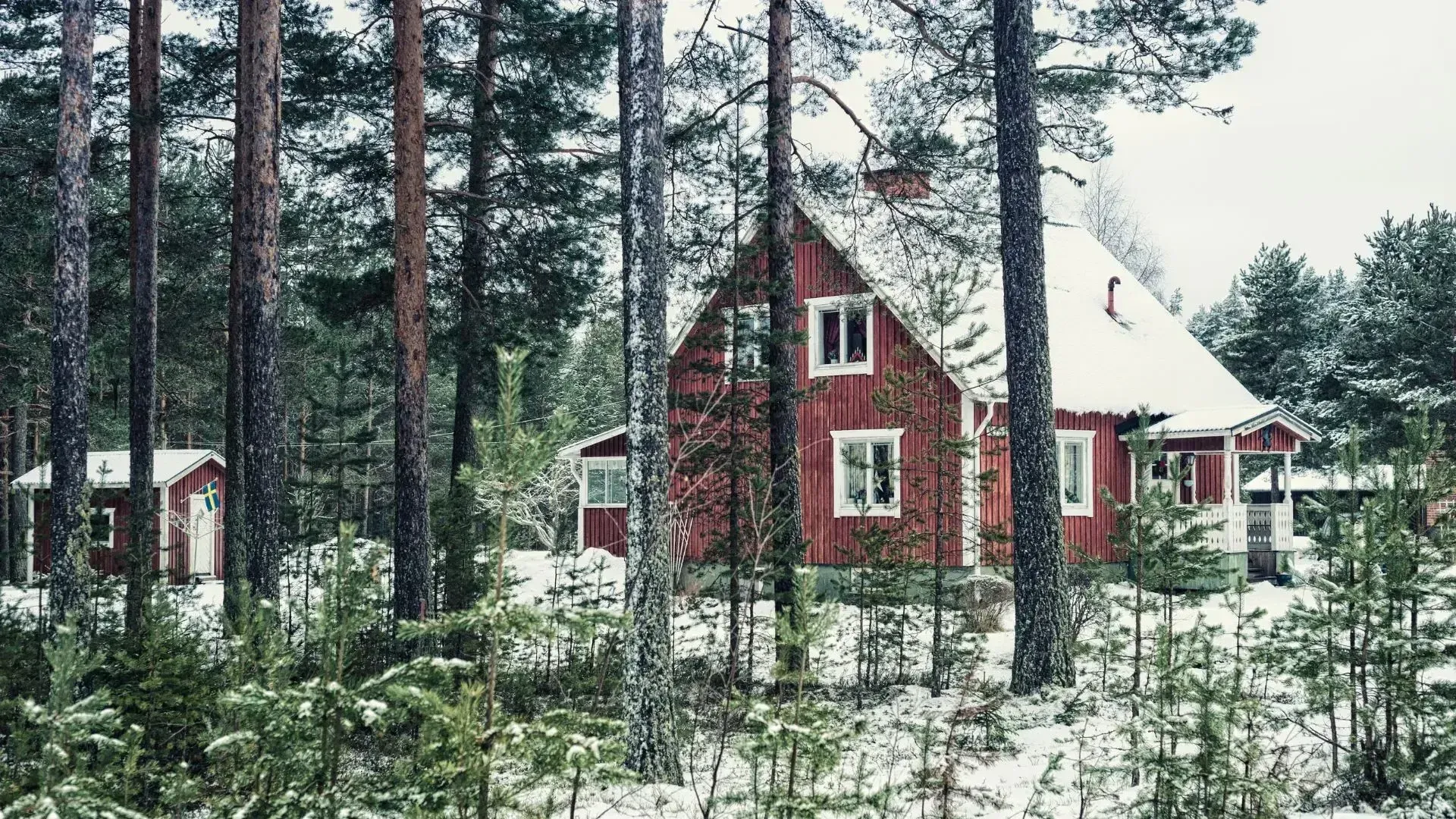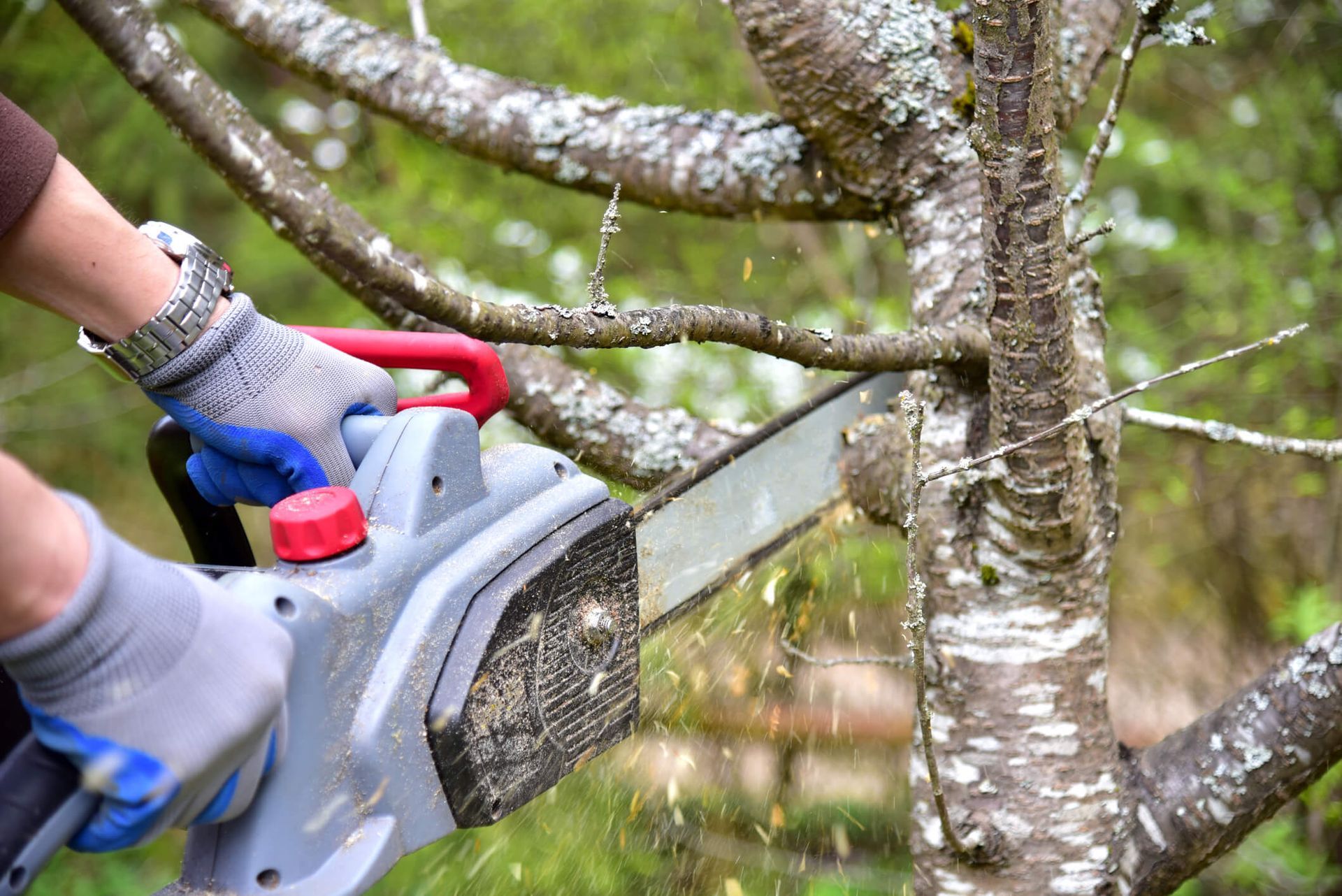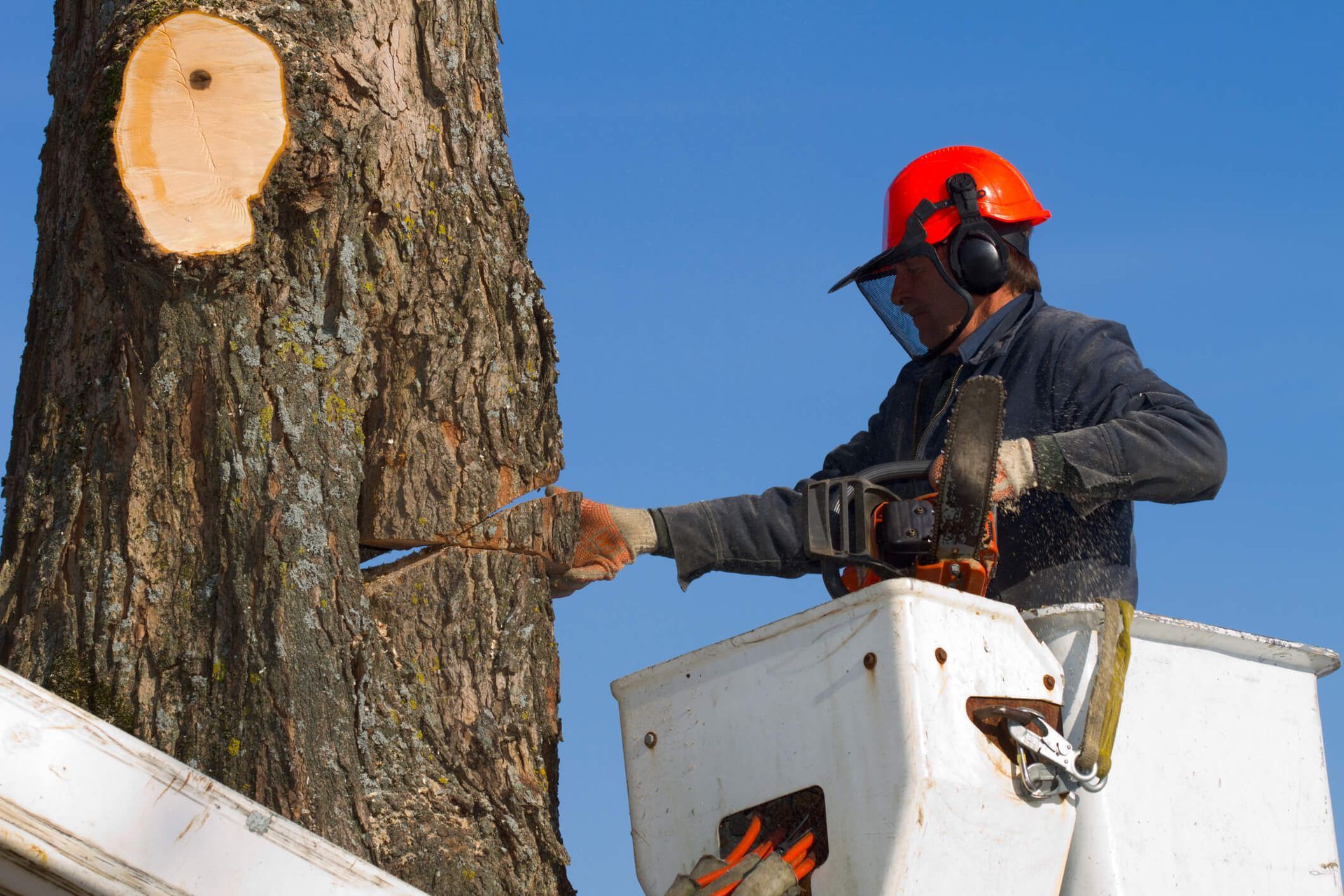Homeowners Need Winter Tree Care to Protect Their Trees The Importance of Winter Tree Care
Trees are living components of your property's landscape and overall environment that require year-round care and attention. During winter, cold temperatures, snow, and ice create unique challenges that can weaken roots, branches, and trunks. Winter tree care is not just about aesthetics—it provides insulation against harsh weather, protects your yard, prevents costly damage, and preserves long-term health.
Proper care during this season gives homeowners practical tips to minimize the risk of broken branches, cracked bark, diseases, and root rot. By working with a skilled arborist or a dedicated tree care team, homeowners can find the best way to maintain healthier landscapes, reduce hazards, and encourage stronger spring growth.
The Impact of Cold Weather on Trees
Cold weather creates stress for trees, and winter weather affects everything from soil to branches. Freezing soil restricts roots from absorbing water, while fluctuating temperatures affect bark layers and trunk stability. Snow and ice accumulate on branches, increasing the likelihood of breaks and making tree pruning one of the most important things homeowners can schedule ahead of time.
Evergreens, shrubs, and even larger species show signs of damage when exposed to extreme cold. Winter winds strip moisture from leaves and needles, causing them to become dehydrated. In some cases, insects take advantage of weakened areas; however, air circulation around the site and the type of tree also play a role. Homeowners must keep a close eye on vulnerable trees, use tools such as a broom to gently remove heavy snow from limbs, and plan a suitable maintenance schedule for different times of the season. Without proper care, winter conditions compromise the overall structure and health of trees in any area.
Key Signs of Tree Stress in Winter
Homeowners should monitor their property closely for visible signs of stress. Common indicators include:
- Cracks are forming along the trunk or bark.
- Drooping or sagging branches under snow and ice.
- Browning or yellowing of evergreen needles.
- Fungus or fungi grow on bark and roots.
- Pest activity in weakened areas.
Early detection allows homeowners to prevent further harm. Certified arborists recommend seasonal inspections to identify issues such as moisture loss, disease, and structural problems.
Preparing Trees Before Harsh Weather
Preparation begins in the fall before the ground freezes. Tasks such as pruning, mulching, and watering strengthen roots and branches to withstand winter stress.
- Pruning removes weak limbs and reduces the risk of falling branches.
- Mulch insulates soil, stabilizing soil temperature.
- Deep watering before the first frost supports root systems during dormancy.
SYS Enterprises recommends applying compost or wood chips around the base of trees to enhance soil nutrients and reduce moisture loss.
Mulching for Soil and Root Protection
Mulch acts as a protective blanket for tree roots. A 2–4 inch layer maintains soil warmth, reduces evaporation, and shields against frost. By insulating the root zone, mulch maintains stable soil conditions despite temperature swings and reduces the likelihood of winter damage that can affect every branch and shrub on your property.
Homeowners should avoid piling mulch directly against trunks, as this can lead to rot, pests, and disease. Instead, maintain a balanced layer that supports moisture retention while protecting root systems. Experts recommend combining mulching with proper winter pruning, as both practices strengthen trees on all sides, regardless of location or condition. For homeowners with questions, consulting professionals ensure that mulch and pruning are applied correctly to protect tree health throughout the season.
The Role of Pruning and Trimming
Pruning is one of the most essential winter tree care steps. Removing diseased, dead, or unstable branches reduces the chance of property damage and helps prevent water loss through open cuts. Since trees are dormant in winter, pruning exposes the tree's structure, making shaping easier and providing homeowners with practical tree care tips they can follow in simple ways.
Certified arborists often use specialized equipment, such as a bucket truck, to reach high branches safely. A tree care company can provide a consultation to explain the process, answer questions about specific needs, and ensure the job is done correctly. Proper pruning not only strengthens tree trunks but also reduces the risk of holes, fungi, and decay. For anyone maintaining a lawn or larger landscape, winter pruning presents an opportunity to protect tree health, enhance appearance, and promote long-term growth. This type of work requires knowledge, skill, and awareness of the state of each tree to achieve the best results.
Protecting Branches and Trunks from Damage
Branches and trunks are vulnerable to damage from heavy snow, ice, and frost. Strong winds and harsh weather conditions can strain tree branches, causing them to snap under the weight of heavy snow or ice. Wrapping trunks with burlap prevents sunscald and frost cracks, especially in young or thin-barked varieties such as fruit trees.
Cabling or bracing large limbs may also be necessary to stabilize the structure. These preventative steps offer benefits for all types of trees, protecting foliage, improving stability, and reducing risks to the house, yard, and even power lines. When in doubt, homeowners should call a professional for guidance to ensure their trees survive severe winter conditions.
Watering Trees During the Winter Season
Even during dormancy, trees require water. Frozen soil prevents roots from accessing sufficient moisture, resulting in dehydration stress. Homeowners should water trees on warmer days when the ground is not frozen, since consistent hydration is a crucial step in winter care.
Deep watering around the root zone reduces the likelihood of root rot and moisture loss. Evergreens and shrubs benefit from this process, providing them with a reliable source of support during harsh winds and cold spells. With proper watering, the rest of the landscape remains healthier, and the relationship between soil moisture and tree strength becomes clearer.
Addressing Salt and Chemical Damage
Salt used for de-icing roads and sidewalks poses risks to soil and tree health. Salt damage causes brown leaves, needle burn, and root stress.
Preventative steps include:
- Using barriers to protect root systems.
- Choosing alternatives such as sand or organic products.
- Flushing soil with water in spring to remove excess salt.
By limiting exposure to harmful chemicals, homeowners can protect the health of their trees and maintain the stability of their landscape.
Managing Damage from Winter Storms
Winter storms bring high winds, snow, and ice that stress branches and trunks. Fallen limbs pose a threat to homes, cars, power lines, and public safety.
SYS Enterprises recommends immediate removal of damaged branches and professional assistance for storm cleanup. Homeowners should avoid attempting hazardous cuts, especially near electrical lines. Certified arborists have the expertise, equipment, and training to handle storm damage safely.
Preventing and Treating Tree Diseases
Cold weather does not eliminate the risk of disease. Many fungal infections and pests thrive in weakened trees during winter. Symptoms may include discolored bark, premature leaf or needle loss, or growth deformities.
Treatment options range from fungicide applications to pruning and soil improvement. Certified arborists provide accurate diagnoses and apply evidence-based solutions to preserve tree health. Proactive prevention helps reduce the spread of disease and supports robust spring growth.
The Value of Professional Tree Services
Tree care often requires professional support. Tree service companies offer specialized maintenance services, including pruning, cabling, disease treatment, and storm response.
SYS Enterprises offers expert Tree Removal in Charlestown, IN, partnering with certified arborists who adhere to ISA standards to ensure safe and effective practices. Professional expertise reduces risks, protects property, and extends the lifespan of trees.
Protecting Evergreens and Fruit Trees
Evergreens and fruit trees require extra protection. Evergreens are prone to winter burn, while fruit trees risk frost damage that affects blossoms and yield.
Protective measures include:
- Wrapping sensitive trunks with burlap.
- Applying mulch around the base to insulate roots.
- Prune weak or diseased branches.
- Watering consistently to prevent dehydration.
These practices protect vulnerable species and preserve both aesthetic and practical value in a homeowner's landscape.

Safety Concerns for Homes and Properties
Tree safety is a serious concern during winter. Weak branches, unstable trunks, and compromised root systems can fall without warning, posing a threat to homes, vehicles, and people. Emergency Tree Services in Charlestown, IN, provide rapid, professional responses to these hazards, ensuring safety and minimizing damage during critical situations.
Regular inspections and proactive maintenance reduce risks. SYS Enterprises prioritizes safety through trimming, bracing, and removal services as needed.
The Importance of Regular Maintenance
Winter care is part of a larger cycle of year-round maintenance. Consistent attention to watering, fertilization, disease monitoring, and structural trimming prevents major issues before they develop.
Regular updates allow arborists to track symptoms, adjust treatments, and keep homeowners informed. Maintenance is the key to long-lasting landscapes and reduced emergency costs.
Homeowner Preparation for Long-Term Care
Homeowners play an active role in winter tree care. Preparation steps include monitoring soil temperature, checking for frost cracks, and scheduling professional consultations as needed.
Keeping supplies such as burlap, mulch, and watering tools ready ensures quick responses during sudden cold spells or storms. With preparation, homeowners create stronger, healthier landscapes for the future.
The Role of Certified Arborists in Tree Health
Certified arborists bring knowledge, experience, and research-based practices to the field of tree care. They provide consultations, identify problems, and recommend targeted solutions for specific tree species.
SYS Enterprises collaborates with arborists who are familiar with local weather conditions, soil types, and the unique landscaping challenges of the area. Their expertise helps homeowners achieve safer properties and healthier trees year-round.
Landscaping Considerations During Winter
Landscaping in winter requires thoughtful adjustments. Protecting root systems, maintaining soil health, and preventing compaction around trunks are essential steps. Compost improves soil nutrients, while strategic pruning enhances the shape and stability of the tree's canopy.
Attention to details such as airflow, sunlight, and spacing ensures healthier plants and trees when spring arrives.
Conclusion: Stronger Trees and Safer Properties
Winter is a difficult season for trees, but with proper care, they can thrive. Protecting roots, trunks, branches, and soil ensures stronger growth and safer properties.
By focusing on pruning, mulching, watering, disease prevention, and storm protection, homeowners reduce risks and promote resilience. SYS Enterprises offers expert tree care services, backed by certified arborists, ensuring every homeowner has the resources and guidance to protect their landscape throughout the winter.
Frequently Asked Questions
Do young trees need different winter care than mature trees?
Yes. Young trees are more susceptible to frost cracks, dehydration, and root damage, so they often require additional mulching, wrapping, and monitoring compared to established trees.
When is the best time to prune trees in winter?
Late winter, before early spring growth begins, is generally the best time for pruning because trees are dormant and the risk of pests and diseases is lower.
Should I cover my trees with tarps or plastic during extreme cold?
Plastic covers trap moisture and can cause damage. Breathable materials, such as burlap, are better suited for protecting trunks and branches.
How do I protect potted or container trees in winter?
Move containers to sheltered areas, wrap pots with insulating material, and avoid leaving them directly exposed to freezing winds.
Can wildlife harm my trees in the winter?
Yes. Deer, rabbits, and rodents often feed on bark and branches in winter. Protective tree guards or fencing can help prevent damage to the tree.
Do I need to fertilize trees during the winter months?
Generally, no. Fertilization is more effective in late fall or early spring when roots can absorb nutrients.
How can I determine if my tree is dead or simply dormant during winter?
Scratch a small section of bark—if the layer beneath is green and moist, the tree is alive. Dead branches are dry and brittle.
What type of mulch works best for winter protection?
Organic mulches, such as wood chips, bark, and straw, provide insulation, improve soil quality, and reduce water loss.
Is it safe to shake ice off tree branches?
No. Shaking frozen branches can cause them to snap. Instead, let ice melt naturally or gently brush off light snow.
How do I prepare my trees for sudden temperature drops or early frosts?
Water deeply before the freeze, apply mulch around the base, and wrap young or thin-barked trees with burlap to reduce stress.


